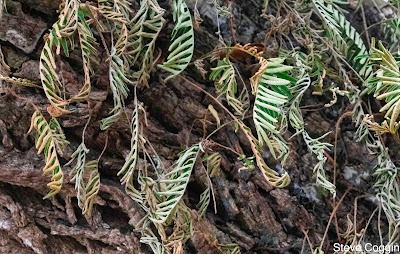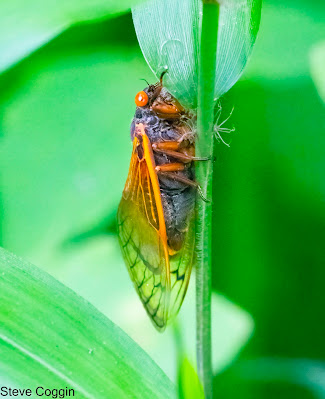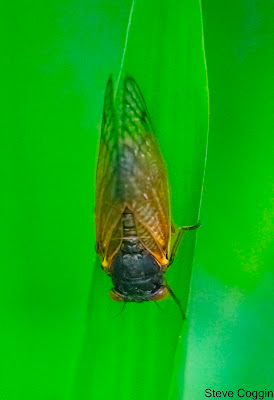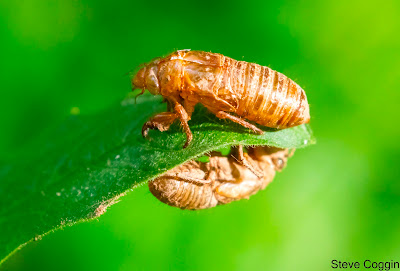 |
| Resurrection Fern (Pleopeltis michauxiana). Green Cay Wetlands, Palm Beach County, Florida. |
Hiking through a hardwood hammock on the coast of Florida Resurrection Ferns (Pleopeltis michauxiana) grow on the trunks of many tree species. This odd little fern can be found over much of the eastern United States and down into the tropics, but it is most abundant on the Coastal Plain of the Southeast. Stands of Resurrection Fern can mantle the limbs trees as it lives its aerial life.
 |
| Resurrection Fern. Orchard View Park, Palm Beach County, Florida. |
Resurrection Ferns have roots that attach the plant to tree bark. They make horizontal stem called the rhizomes that grow along the trunk and thrusts up the photosynthetic leaves called fronds. The underside of the leaves have multiple brown spots called sori. Each sorus contains dozens of sporangia that produce the reproductive spores of the plant.
 |
| Sori, the spore producing structurers on the underside of a Resurrection Fern Leaf. Orchard View Park, Palm Beach County, Florida |
Spores are released from the sori and these microscopic
reproductive structures float through the air.
If one lands on a favorable patch of bark, it can, after some complex
reproductive antics, produce a new fern.
With tree branches being the main location of growth, the Resurrection Fern has no contact with the soil. Resurrection Ferns do not parasitize the trees on which they grow but rather they are epiphytes, absorbing nutrients and water from the air or the surface of the bark.
 |
| Resurrection Fern. Orchard View Park, Palm Beach County, Florida. |
 |
| Detail of dry Resurrection Fern. A.D. Barnes Park, Miami-Dade County, Florida. |
When conditions are dry, Resurrection Ferns can undergo extreme dehydration. They shrivel up, turn brown and can lose more than 75% of their water. In contrast people that lose 10% of their water experience mental derangement and death occurs at about 20% dehydration. When the rains come, dry, shriveled Resurrection Ferns can quickly absorb water. They become green and active in a matter of hours. The common name of the fern is a nod to their seeming return from the dead when going from dry to wet conditions.
 |
| Resurrection Fern. Green Cay Wetlands, Palm Beach County, Florida. |







